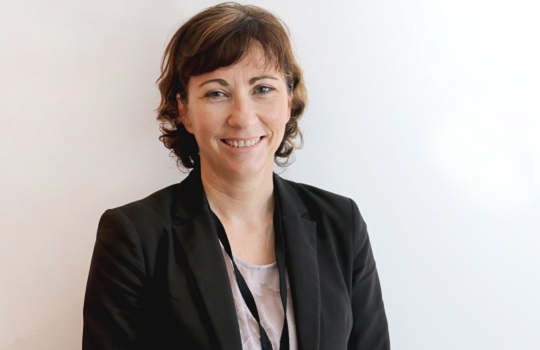
We had about 95 per cent of our people working from home right when level four lockdowns started.
New Zealand has been a shining example to the world of successful Covid containment – though, some would argue, at the cost of some of the most socially restrictive lockdowns adopted by any single country. For many organisations, ill-prepared for this sudden shuttering of their businesses, operations were forced to come to a grinding halt for weeks on end.
For Suncorp NZ, however, already an industry leader in flexible working, the shift to remote operations appeared to be just another day, with the insurance giant – having the critical infrastructure and systems already well in place – reportedly experiencing no degradation in customer service or workforce productivity during NZ’s rolling Covid lockdowns.
FST spoke with Jane Brewer, Suncorp NZ’s Executive General Manager of Technology and Transformation, to learn about the insurer’s seamless shift to WFH and the critical systems and infrastructure necessary to support its ‘new normal’ hybrid working model.
FST Media: As a transformation leader, what to you defines a successful transformation?
Brewer: It really is a shift in culture and a shift in leadership across the organisation.
Historically, we’ve perhaps focused too much on implementing a technology widget or asset. That might get you some sort of uplift, but to truly transform, it’s less about the asset or the mechanical nature of the change than around the leadership and the cultural change that underpins behavioural differences. This is really about shifting the entire organisation into a different way of being or thinking or working.
That’s really, really hard to achieve as an organisation. It’s not something you can just solve by setting up a project; it takes a lot of collective effort, energy and focus, and it’s incremental shifts that help you to transform over time.
FST Media: How do you know when you’ve delivered a successful transformation?
Brewer: It’s when you see those shifts happening across the organisation. If you listen in to, for instance within our organisation, a claims consultant at work, and you can hear some of our strategic initiatives being played out in a day-to-day way, that’s when you really feel like you’re starting to make a difference.
Often it’s just little changes, but when you see a shift at the coalface, that’s when you know you’re making progress. And there can be quite a lag between that first seed of strategic intent to then actual people within the organisation being different in their daily practices.
FST Media: Transformation leaders inevitable encounter some level of inertia or resistance to business change. How do you sell the message that transformation is a long-term business benefit?
Brewer: Absolutely, and it’s so multi-faceted. One of the most important pieces is the symbolic change from senior leadership. Consider our CEO for Suncorp NZ, Jimmy Higgins. He is very bold and overt around the transformation journey we’re on, as well as being very open around how he is changing himself.
The most powerful thing you can do as a leader is to be really vulnerable and very open about how we’re all human beings.
As much as we want change to happen, it can also be uncomfortable. And we need to get good at being uncomfortable – being uncomfortable is actually a good sign; it means that you are changing and that you’re pushing yourself and you are moving to being different – and also understanding that sometimes you can take your waterline of uncomfortableness and you might push yourself a bit much.
We’re finding that vulnerability and being very open about ourselves and how we’re on that journey as much as anyone else in the organisation is very well received; that also really helps everyone else be open and honest about the change. And it’s okay to acknowledge that it’s getting to you at that point in time, because then we can help each other to keep going.
That’s what we’re doing differently this time: that openness and vulnerability and recognising that we are humans.
In the past it tended to be, ‘These three bullet points and three tasks’ that everyone needs to get through. But true change is emotional and it’s behavioural: it’s head and the heart. That’s how Suncorp is progressing with our transformation.
FST Media: New Zealand has been one of the standouts in suppressing the spread of Covid, though this did involve some fairly stringent lockdowns to contain the coronavirus’s spread. How well do you feel Suncorp NZ has adapted to rolling lockdowns?
Brewer: We’re very proud of the way we reacted and progressed through the lockdown. We had only a few days’ notice for the entire country to adjust. And lockdown for us in NZ meant that all businesses were effectively shut and that you were contained to your home.
Like all organisations, everyone in the business rallied around. For Suncorp New Zealand, we have our dedicated incident management teams, of which I’m a member, consisting of a core group of leaders with the remit to convene and govern during a crisis. As soon as the NZ Government announced the lockdowns, we effectively went into action.
From us, we turned around all our employees to be able to work from home within a few days.
We had about 95 per cent of our people working from home right when level four lockdowns started.
The only reason we couldn’t have the other five per cent was simply the delay in getting the equipment out to people, because, obviously, every other company was trying to do the same thing.
From an infrastructure point of view, we didn’t need to do anything. We had our hyper-converged infrastructure in place, which allowed us to scale up and manage all our employees working from home.
We’ve also had a policy of flexible working for a really long time. What we found, though, was that teams like our call centre staff tended to come into the office because it was just a much more structured environment (or, perhaps they lacked suitable home offices or work environments). Our focus during the lockdowns really was on enabling these call centre employees to be able to work from home. From a technology perspective, this was about getting as many laptops as we could from all local consumer tech companies.
It was really about the mechanics of getting people set up at home. We had our telephony systems to make sure people had the right soft license to work from home. It was a huge amount of effort – I think it was around 24 hours – getting everybody enabled.
FST Media: In this unique, lockdown-bound operating environment, what did Suncorp NZ do to support its people?
For one, twice a week, we arranged Skype conference calls with leaders across the organisation to deliver company-wide updates. We’d give updates on, for instance, country infrastructure, our infrastructure, how many people were remote enabled – for example, I’d give a technology update, getting people used to working from a home environment.
Perhaps the most important of these updates was the one from HR around the Covid situation: for instance, what’s happening across the country, the people situation, things to be aware of, tips for leaders around managing staff remotely. Those leader updates were fantastic. We ran them throughout the eight to 10 weeks of the lockdown period and got hugely valuable feedback around those leaders and their decisions. And, crucially, we managed to very quickly get everybody on the same page.
The other thing we did was create a Yammer site to effectively crowdsource tips and tricks from our staff for working from home. We thought, rather than people ringing our service desk with technical questions around their WFH environment or just tips for working at home, we’d implement the Yammer platform instead, allowing everyone across the organisation to post an answer. Rather than burdening the already overstretched service desk who were flat out trying to help people on bigger issues, this proved a very simple, but very effective measure to support our staff.
FST Media: A staff survey last year revealed more half of Suncorp’s workforce were keen to continue working from home at least 80 per cent of the time, with the remainder happy to adopt a hybrid approach with at least a couple of days in the office.
How willingly has your executive team been to accepting this continued workforce flexibility even after the Covid risk has fully abated?
Brewer: We’re fully supportive of it. We did indeed have a survey quite recently, with more than 80 per cent of our people preferring a hybrid way of working. People have really enjoyed being able to come back into the office and have that connection again. And what we’ve found is that most people are really valuing being able to come into work when they want to connect with people – it could be for a brainstorming session or a team-building environment or perhaps for project planning days. There’s a certain type of work and team-building exercises that work much better when you’re face-to-face. And then there’s work that more suits being at home – when you’re in the zone and you need to concentrate.
Most of our employees have, through the last year, really figured out which work structure and the environment that suits that structure best.
We have a hybrid working model in place now in place, where staff can spend one or two days in the office and the rest at home.
But if you want to and you’re more of an office person, you can come in every day. Most people are doing that hybrid model, though. I think we’ve become really effective at working remotely as well as working effectively when we are together.
FST Media: Have you noticed any changes in productivity, efficiency or indeed customer service as a result of this hybrid WFH model?
Brewer: We were really proud that our customers didn’t notice the difference throughout the lockdown period.
We were fully enabled to support our customers and be there for them, whether an existing claim or new policy.
We’ve seen a huge uplift in our internal capability and internal digital mindset.
We’ve got employees who, prior to Covid, would have said to themselves, ‘I have to be in the office every day. That’s just how I work’, or ‘I’d never work from home, it’s not for me!’ to now being huge advocates for WFH. The productivity you get from structuring your work when you need more time to think or concentrate, work from home can really enable that.
FST Media: While, of course, you’d want to avoid ‘big brothering’ your workforce, do you have any formal systems in place to ensure that remote workers are kept engaged and productive?
Brewer: Of course, we didn’t want a surveillance-type solution – that doesn’t sit with our values of trusting and empowering our workforce. But we do have operational excellence as a way of working at Suncorp. Part of this is measuring the productivity of teams, so we were able to see if there was any drop in productivity – and that could be caused by a number of things – we had those measurements in place, so we were able to monitor that and adjust it.
But we certainly didn’t find that productivity decreased due to working from home at all.
FST Media: Looking at Suncorp’s implementation of hyper-converged infrastructure. Could you explain a little bit about the implementation and how it has enabled your virtually seamless shift to WFH?
Brewer: We implemented hyper-converged infrastructure with Nutanix a few years ago. It was all part of our infrastructure roadmap, building more resiliency and an ability to scale within our organisation which would then enable our people to work from home.
Hyper-converged infrastructure enabled virtual desktop, which then allowed us to have full capabilities for anyone in Suncorp NZ to work from home, regardless of their role. It collapses storage and compute into one box, essentially, so it’s more software-driven infrastructure. It’s enabled us to do more configuration and therefore allowed us to scale more easily.
For us, it was a real proof point.
Going into full lockdown, we didn’t need to do anything with the existing hyper-converged infrastructure. It was all there and we had the capacity to take on everybody working from home.
It was fantastic we had that in place, because all of our energy then went into the hardware and in enabling people to set up their WFH environments. If we had to put our energy also into scaling our infrastructure or, worse, our infrastructure couldn’t cope at all, we’d have been in a very different position to what we are now. We were able to react as well as we did because we had that foundation piece in place. ◼





